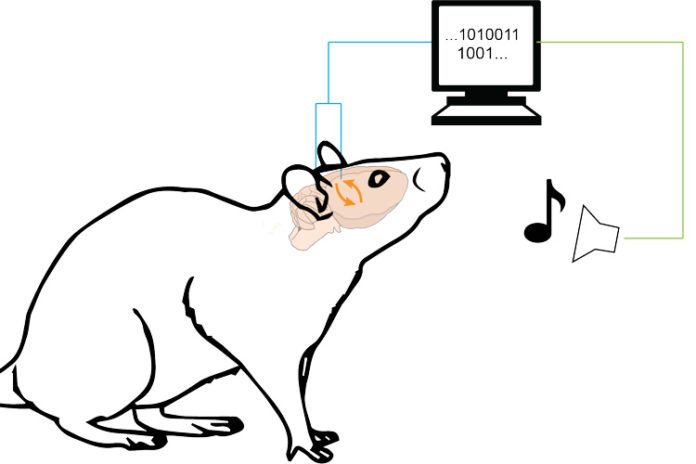Scientists at the University of California, Berkeley along with Columbia University and the Champalimaud Centre for the Unknown in Lisbon, Portugal have demonstrated the astounding flexibility of the brain by training neurons that normally process input from the eyes to develop new skills.
Scientists actually wanted to control computer-generated tone. For that, they wired these neurons, located in the visual cortex, to operate a robotic arm or any other brain-machine interface, co-opting sensory neurons to do the work of motor neurons. They found that the connections from the cortex to the underlying striatum were key to this learning, representing a feedback loop that may be the building block for learning and memory throughout the brain.
Jose Carmena, senior author of a paper said, “We arbitrarily hijacked small groups of neurons in the visual cortex and virtually re-routed their output to make them control a brain-machine interface or BMI. To gain a reward, the rats learned to produce arbitrary patterns of neural activity unrelated to visual input in order to control a BMI, highlighting the power of neuroplasticity and the flexibility of the brain.”
These findings suggest that the striatum has a broader role in shaping cortical activity based on ongoing experience and behavioral outcomes than previously acknowledged, and have wide implications for the neuroscience of thought and action and brain-machine interfaces.
The pliancy of the mind is notable; individuals with harm to one zone of the cerebrum can retrain neighboring regions to assume control over the lost capacity.
Carmena along with Neely, who completed his Ph.D. with Carmena in 2017, tested the limits of this pliancy by trying to train visual neurons, which normally interpret input from the eyes but don’t control any physical action, to act like motor neurons that control muscles. They implanted 16 electrodes into the visual cortex (V1) of 12 rats.
Later on, they arbitrarily routed the electrical activity recorded by the electrodes that show the spiking of several individual neurons on a device with increased or decreased pitch of the tone.
During the study, rats were trained over several sessions to raise or lower the pitch. All rats learned to produce spike activity in the correct set of neurons, while silencing other neurons, in order to obtain the reward.
They were effective oblivious – which the analysts thought would limit obstruction from light sparkling in the rats’ eyes – yet in addition performed similarly well with the lights on. Anodes in the dorsomedial striatum, some portion of the basal ganglia, recorded changes reliable with learning in the visual cortex.
Rui Costa, neuroscientists at the Champalimaud Centre for the Unknown said, “These experiments further demonstrated that the striatum helps the organism learn to control patterns of activity in other areas of the brain, even if those patterns of activity are located in in the primary sensory area, such as the visual cortex. These findings suggest that the striatum may be important for regulating an organism’s ability for actively sensing, or perception.”
These mice also learned to control the frequency of the tone but were unable to do so when the cells of the striatum were turned off. In 2012, Carmena, Costa, and colleagues were the first to show that in the motor area of the brain, neurons could not learn a virtual task without plasticity in the connections to cells in the striatum.
Carmena said, “When these cells were inactivated, the animal would not be able to learn, which suggests that what we observed six years ago in motor areas with respect to the striatum seems to be common, like a building block for learning in the brain.”
According to Carmena, another area of the brain is additionally part of the learning circle including the cortex and striatum to give criticism from the striatum to the cortex, since the input exists, however, no striatal cells interface straightforwardly back to the visual cortex. Although the studies are locating the other areas that are part of these processes, and shed light on how the brain is able to retrain just a handful of cells in the cortex out of millions to operate an object outside the body.
This study that distributed in the journal Neuron, demonstrates the flexibility of the central nervous system and the brain for being able to connect something very arbitrary and abstract for an animal – something they don’t do in their ecological niche, such as tune a tone to a high pitch to get a reward – to neurons in the cortex,” he said. “You can leverage all these built-in mechanisms for learning to learn these new modalities and change the visual or motor cortex into a BMI cortex. The brain isn’t saying, ‘Hey, what is this?’ The circuit is talking to them and they work.”
